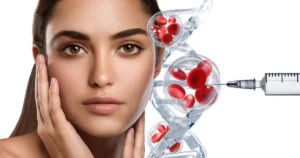Acne scars can be a persistent reminder of past skin troubles, often impacting self-esteem and confidence. Fortunately, advancements in dermatological treatments have provided practical solutions for reducing the appearance of acne scars. Two popular options are laser treatments and chemical peels. Both methods aim to improve skin texture and appearance, but they work in different ways and may be better suited for various types of acne scars. In this article, we’ll explore how laser treatments compare to chemical peels for acne scar removal, helping you make an informed decision about which treatment might be best for your skin.
Understanding Acne Scars
Before diving into treatment comparisons, it’s essential to understand the different types of acne scars:
Atrophic scars
Depressed scars that sit below the surrounding skin level
- Ice pick scars: Deep, narrow scars
- Boxcar scars: Wider depressions with sharper edges
- Rolling scars: Wider depressions with sloping edges
Hypertrophic scars
Raised scars that sit above the surrounding skin level
Keloid scars
Overgrown raised scars that extend beyond the original injury site
The type and severity of acne scars influence which treatment method is most effective.
Laser Treatments for Acne Scar Removal
Laser treatments use focused light energy to target specific skin layers, stimulating collagen production and resurfacing the skin.
Types of Laser Treatments:
Ablative Lasers
- CO2 Lasers
- Erbium YAG Lasers
Non-Ablative Lasers
- Fractional Lasers
- Pulsed-Dye Lasers
How Laser Treatments Work
Laser treatments work by delivering controlled damage to the skin, which triggers the body’s natural healing response. This process stimulates collagen production, helps to remodel scar tissue, and promotes the growth of new, healthy skin cells.
Advantages of Laser Treatments
Precision
Lasers can target specific areas without affecting surrounding tissue.
Customizable
Treatment intensity can be adjusted based on scar severity and skin type.
Practical for various scar types
It can address both atrophic and hypertrophic scars.
Long-lasting results
Improvements continue over time as collagen remodeling occurs.
Disadvantages of Laser Treatments:
Cost
Generally more expensive than chemical peels.
Downtime
It may require several days of recovery, especially for ablative treatments.
Potential side effects
Risk of temporary redness, swelling, and, in rare cases, changes in skin pigmentation.
Multiple sessions
Often, it requires a series of treatments for optimal results.
Chemical Peels for Acne Scar Removal
Chemical peels involve applying a chemical solution to the skin, which causes controlled exfoliation and peeling of the top skin layers.
Types of Chemical Peels
Superficial Peels
- Alpha-hydroxy acids (AHAs) like glycolic acid
- Beta-hydroxy acids (BHAs) like salicylic acid
Medium Peels
- Trichloroacetic acid (TCA)
Deep Peels
- Phenol peels
How Chemical Peels Work
Chemical peels work by removing the outer layers of damaged skin, promoting cell turnover, and stimulating collagen production. As the skin heals, it often appears smoother and more even-toned.
Advantages of Chemical Peels
Cost-effective
Generally less expensive than laser treatments.
Versatile
Can address multiple skin concerns simultaneously (e.g., acne scars, fine lines, uneven skin tone).
Customizable
Peel strength can be adjusted based on individual needs.
Minimal downtime
Especially for superficial peels.
Disadvantages of Chemical Peels:
Less precise
Affects the entire treated area rather than targeting specific scars.
Limited effectiveness for deep scars
It may not be as effective for severe atrophic scars.
Potential for irritation
It can cause temporary redness, peeling, and sensitivity.
Risk of hyperpigmentation
Particularly in darker skin tones if performed incorrectly.
Comparing Effectiveness
The effectiveness of laser treatments versus chemical peels for acne scar removal depends on several factors:
Scar Type and Severity
Laser treatments are generally more effective for deeper, more severe scars.
Chemical peels are often sufficient for mild to moderate surface-level scarring.
Skin Type and Tone
Laser treatments can be customized for various skin types and tones.
Chemical peels may carry a higher risk of complications for darker skin tones.
Treatment Goals
Laser treatments offer more dramatic results for scar remodeling.
Chemical peels provide overall skin rejuvenation in addition to scar improvement.
Recovery Time
Ablative laser treatments typically require more downtime than chemical peels.
Non-ablative lasers and superficial peels have similar recovery periods.
Number of Treatments
Both methods often require multiple sessions for optimal results.
Laser treatments may achieve the desired results in fewer sessions for severe scarring.
Choosing the Right Treatment
When deciding between laser treatments and chemical peels for acne scar removal, consider the following:
Consult a Professional
A dermatologist or skincare specialist can assess your skin type, scar severity, and overall health to recommend the most appropriate treatment.
Consider Your Budget
Laser treatments are generally more expensive per session but may require fewer treatments overall. Chemical peels are more budget-friendly but might need more frequent sessions.
Evaluate Downtime
Consider how much time you can allocate for recovery. If you can’t afford extended downtime, non-ablative lasers or superficial chemical peels might be more suitable.
Assess Your Pain Tolerance
Laser treatments can be more uncomfortable than chemical peels, although topical anesthetics are typically used to minimize discomfort.
Think Long-Term
While chemical peels offer more immediate surface-level improvements, laser treatments may provide more significant long-term results for severe scarring.
Combining Treatments
In some cases, a combination of laser treatments and chemical peels may offer the best results. For example:
- Chemical peels should be used to improve overall skin texture and tone before laser treatments.
- Alternating between laser sessions and chemical peels to address different aspects of skin rejuvenation.
- Following laser treatments with mild chemical peels to maintain results and continue skin improvement.
A skincare professional can create a customized treatment plan that combines these methods for optimal results.
Aftercare and Maintenance
Regardless of the chosen treatment, proper aftercare is crucial for achieving and maintaining results:
Sun Protection
Both laser treatments and chemical peels increase skin sensitivity to UV rays. Therefore, it is essential to use broad-spectrum sunscreen diligently.
Gentle Skincare
Use mild, non-irritating skincare products as recommended by your provider.
Moisturize
Keep skin hydrated to support the healing process.
Follow-Up Treatments
Adhere to the recommended treatment schedule for best results.
Healthy Lifestyle
Maintain a balanced diet, stay hydrated, and avoid smoking to support overall skin health.
Experience the Premium Treatment at Ocean State Laser & Aesthetics Today!
Both laser treatments and chemical peels offer practical solutions for acne scar removal, each with its own set of advantages and considerations. Laser treatments at Ocean State Laser & Aesthetics provide precision and effectiveness for deeper scars but come with a higher cost and the potential for more extended downtime. Chemical peels offer a more affordable option with minimal downtime, suitable for mild to moderate scarring and overall skin rejuvenation.
The best choice between these treatments depends on your skin type, scar severity, budget, and treatment goals. Consulting with a qualified skincare professional is crucial in determining the most appropriate approach for your unique situation.
Remember that acne scar removal often requires patience and a combination of treatments for optimal results. With the right approach and consistent care, you can significantly improve the appearance of acne scars and regain confidence in your skin.




